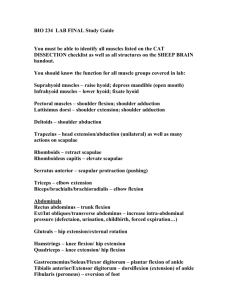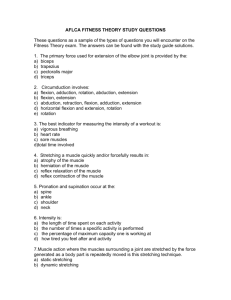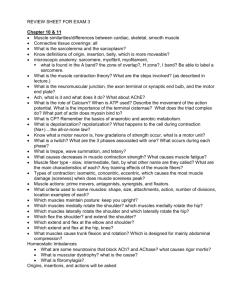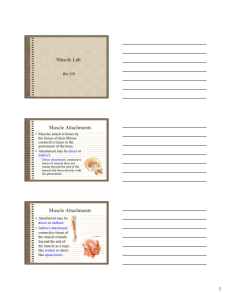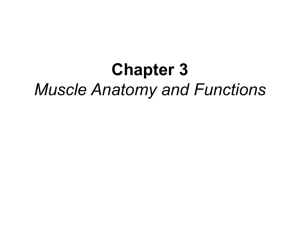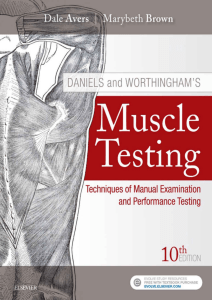Skeletal Muscles Study Guide
advertisement
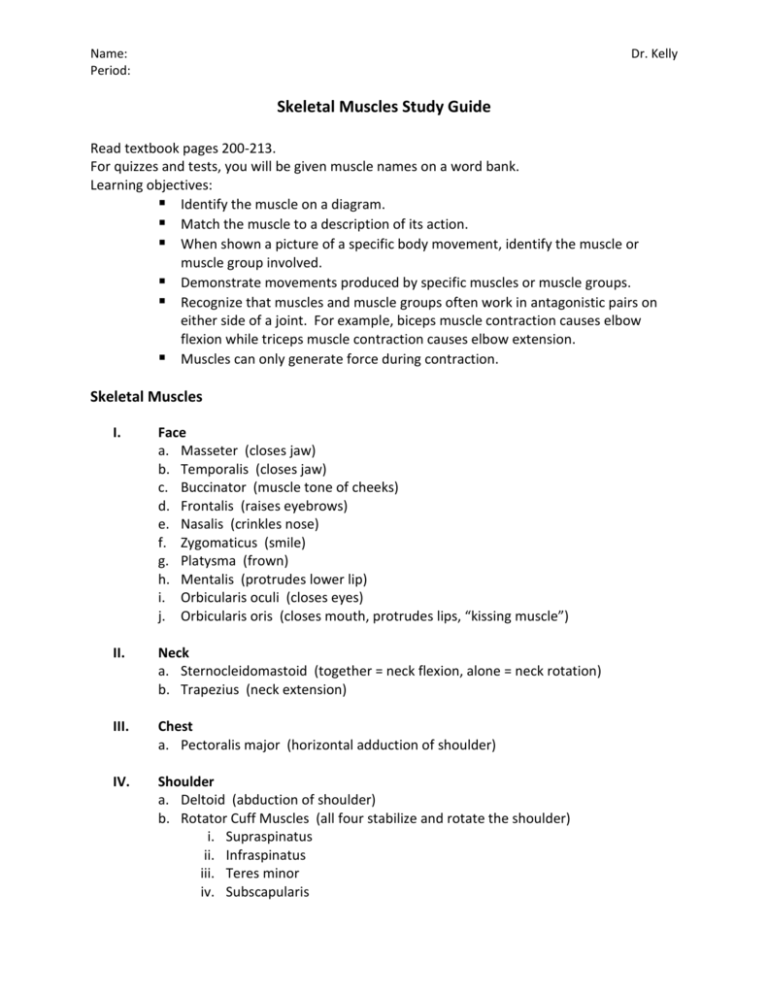
Name: Period: Dr. Kelly Skeletal Muscles Study Guide Read textbook pages 200-213. For quizzes and tests, you will be given muscle names on a word bank. Learning objectives: Identify the muscle on a diagram. Match the muscle to a description of its action. When shown a picture of a specific body movement, identify the muscle or muscle group involved. Demonstrate movements produced by specific muscles or muscle groups. Recognize that muscles and muscle groups often work in antagonistic pairs on either side of a joint. For example, biceps muscle contraction causes elbow flexion while triceps muscle contraction causes elbow extension. Muscles can only generate force during contraction. Skeletal Muscles I. Face a. Masseter (closes jaw) b. Temporalis (closes jaw) c. Buccinator (muscle tone of cheeks) d. Frontalis (raises eyebrows) e. Nasalis (crinkles nose) f. Zygomaticus (smile) g. Platysma (frown) h. Mentalis (protrudes lower lip) i. Orbicularis oculi (closes eyes) j. Orbicularis oris (closes mouth, protrudes lips, “kissing muscle”) II. Neck a. Sternocleidomastoid (together = neck flexion, alone = neck rotation) b. Trapezius (neck extension) III. Chest a. Pectoralis major (horizontal adduction of shoulder) IV. Shoulder a. Deltoid (abduction of shoulder) b. Rotator Cuff Muscles (all four stabilize and rotate the shoulder) i. Supraspinatus ii. Infraspinatus iii. Teres minor iv. Subscapularis Name: Period: Dr. Kelly V. Abdomen (all compress, retain and protect our abdominal organs) a. Rectus abdominis (trunk flexion) b. External oblique (trunk rotation) c. Internal oblique (trunk rotation) d. Transversus abdominis (trunk rotation) e. Diaphragm (breathing) VI. Back a. Trapezius (shoulder elevation, shoulder retraction) b. Latissimus dorsi (shoulder adduction, shoulder extension) c. Erector spinae (together = trunk extension, alone = lateral flexion) VII. Arm a. Biceps (elbow flexion) b. Triceps (elbow extension) c. Pronator teres (pronation) d. Supinator (supination) e. Wrist flexors (wrist flexion) f. Finger flexors (finger flexion) g. Wrist extensors (wrist extension) h. Finger extensors (finger extension) VIII. Leg a. Iliopsoas (hip flexion) b. Sartorius (hip flexion and lateral rotation) c. Hip adductors (hip adduction) d. Gluteus maximus (hip extension) e. Quadriceps muscle group (all four muscles do knee extension) >Rectus femoris, vastus medialis, vastus intermedius, vastus lateralis f. Hamstrings muscle group (all three muscles do knee flexion) >Biceps femoris, semitendinosus, semimembranosus g. Calf muscle group (both muscles do plantarflexion) >Gastrocnemius and soleus h. Tibialis anterior (dorsiflexion)
